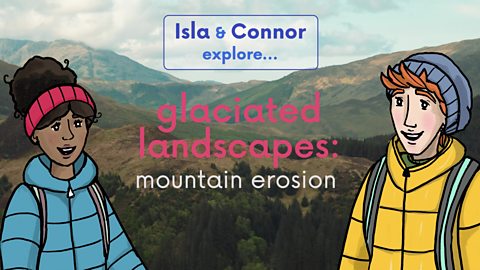The north coast of Scotland has become popular with tourists who want to explore history and dramatic landscapes. This brings benefits but also causes issues for the area and people who live here.
Key points
In this article you can find out:
- travel along the north coast of Scotland
- the benefits and issues that tourism can bring
- different landscapes along the north coast
- history of the north coast
This resource is suitable for People, Place and Environment topics for P5, P6 and P7 (Second Level Curriculum for Excellence).
Watch
Watch Isla and Connor explore the north coast of Scotland by bike.
ISLA: Here we are in Thurso, the most northerly town in mainland Scotland.
CONNOR: The town grew up here because Thurso was a useful port for Norse settlers and traders the Vikings, who invaded and settled here from what is now Norway.
Nowadays, Thurso serves visitors and tourists.
The town supports the traditional fishing industry and is also very popular for water sports.
ISLA: And the main port is just along the coast in Scrabster connecting the Scottish mainland to Orkney and Shetland by the sea, but Thurso is also popular for tourists travelling by road to explore the incredible North coast of Scotland.
CONNOR: What's our next stop, then?
ISLA: Follow me and find out!
CONNOR: Hey, wait.
ISLA: This is Strathy, a scattered community.
CONNOR: Ah! It's a beautiful view.
It's mainly a place for people to live.
But tourists like us enjoy staying here for the beaches and countryside.
ISLA: This is one of the downsides of more tourists.
Not everyone throws their rubbish away properly.
This can be harmful to wildlife, leave the area looking untidy and cause conflict between local people and tourists.
CONNOR: Well, I know what I'm doing with mine.
I'll take my rubbish away with me and recycle it later.
ISLA: Some of these roads aren't built for lots of traffic.
Added traffic from tourism impacts people who live here and a lot of the road is single track so cars have to use passing places to pass each other if they're going in opposite directions.
It can be slow and big vehicles can get stuck.
CONNOR: More traffic is bad for the environment.
Traffic creates extra mess, noise and air pollution.
ISLA: I'm glad that bikes don't cause any pollution.
Even though they're much harder work!
CONNOR: Even cyclists like us can add to issues.
We can be hard to pass and hold up traffic.
ISLA: We've all got to use the road carefully and courteously.
CONNOR: Now, imagine a satellite being launched into space right here.
ISLA: Really?
CONNOR: Yeah, there are plans to build a space port right here.
But this is protected peat land.
ISLA: Oh, a good habitat for birds and peat absorbs large amounts of carbon, which makes it a great natural help against climate change.
CONNOR: But on the other hand, the spaceport would create jobs and develop business and tourism in the area.
ISLA: We'll have to wait and see what happens.
This is a great spot to camp, flat grassland away from houses where we don't need to disturb thenatural environment or any other people.
CONNOR: Yeah, and a sea view.
We just need to be careful that we don't leave any trace when we leave.
ISLA: Of course.
Let's pitch the tents.
The stars look so much brighter and easier to see where there is less artificial light.
Imagine the satellites that might be up there one day, launched from here!
CONNOR: What a journey, from Scotland to space!
Maybe we'll make that journey one day, hey Isla?
ISLA: Maybe in your dreams!
Night Connor.
CONNOR: Night Isla.
Travel along the north coast of Scotland
With no railway line, the only way to travel along the north coast of Scotland is by road but there are different modes of transport that you can use. Some of these methods are better for the environment than others.
Tourism in the north coast of Scotland
Tourism is big business along the north coast of Scotland and the area attracts visitors from all over the work.
Click through the slideshow to see some of the attractions people come to experience.
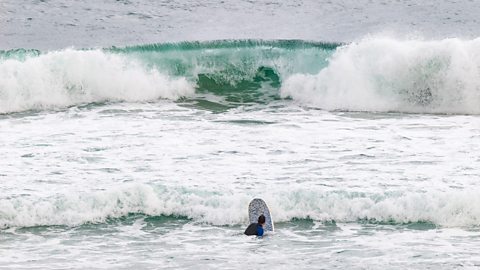
Image caption, Water sports
Big waves attract surfers to Thurso. Many people enjoy exploring the cliffs and coves of the north coast by paddleboard or kayak. There are even wild (and cold) swimming tours! (David Pressland / Alamy Stock Photo)
Image caption, Beaches
There are many stunning beaches along the north coast of Scotland. Beaches like Balnakeil Beach and Achmelvich Bay provide visitors with amazing white sands and crystal clear waters. Sheigra beach is very popular with campers. (Clearview / Alamy Stock Photo)
Image caption, Food
The north coast is famous for its fresh seafood but there are many other foods to try. The north coast even has its own chocolate factory! (The Picture Pantry / Alamy Stock Photo)
Image caption, Driving
The road around the north coast has become a popular route for tourists to drive or ride along. Many tourists will cover the route in a few days, enjoying the scenery as they travel and stopping in different locations each night. (Rob Ford / Alamy Stock Photo)
1 of 4
Benefits and issues of tourism
Tourism is an important industry in Scotland. Areas that attract tourists can see many benefits but there can also be lots of issues. Click each heading to find out what some of these are:
Benefits of tourism
Jobs – Tourism brings jobs in hotels, camp sites, shops and restaurants. More tourists visit the north coast in summer, so some of these jobs are seasonal rather than year-round.
Money - Tourists bring money to an area. They pay to stay in hotels, bed and breakfasts and campsites, and they might also spend money in local shops and on local services.
Investment - Because tourism brings in money, the government and council might invest more money in roads, transport and other services, and on looking after the local environment. This can bring improvements for local people.
Issues of tourism
Traffic - Increased tourism can mean more traffic. Lots of cars on narrow and single-track roads can make travel slower for local people.
Waste - More tourists means more waste. Bins in popular areas can become overfull. Some people leave litter after camping or travelling through rural areas. This would be less of a problem if more people took their rubbish away with them to dispose of later.
Homes - When more houses are used for holiday accommodation there are fewer houses for local people to live in. This can make it more difficult for young people to stay in their local area.
Landscapes along the north coast of Scotland
Many people visit the north coast of Scotland to enjoy the scenery.
There are lots of different types of landscape for visitors to enjoy:
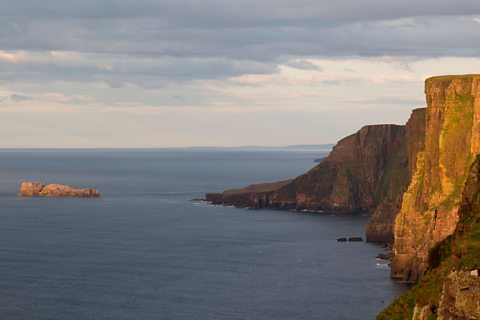 Image source, mark ferguson / Alamy Stock Photo
Image source, mark ferguson / Alamy Stock Photo- Cliffs and rocky coasts - There are miles of cliffs and rocky coast lines along the north coast of Scotland. Clo Mor near Cape Wrath is home to some of the highest cliffs in the UK. You may be able to see some nesting seabirds from the cliffs around the north coast of Scotland!
 Image source, mark ferguson / Alamy Stock Photo
Image source, mark ferguson / Alamy Stock Photo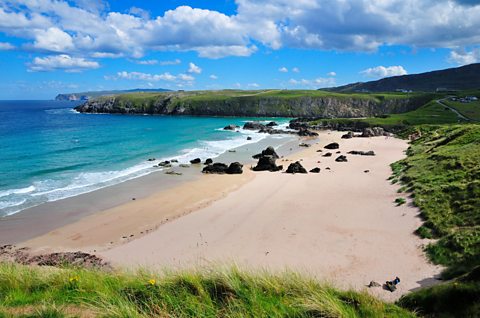 Image source, imageBROKER / Alamy Stock Photo
Image source, imageBROKER / Alamy Stock Photo- Beaches and sea - There are beautiful sandy beaches with clear waters around the north coast of Scotland. Places like Firemore Beach in Wester Ross are great places to relax or even take part in some water sports!
 Image source, imageBROKER / Alamy Stock Photo
Image source, imageBROKER / Alamy Stock Photo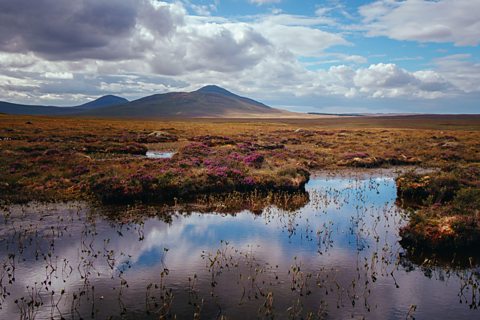 Image source, Dave Neil / Alamy Stock Photo
Image source, Dave Neil / Alamy Stock Photo- Blanket bog- The north coast of Scotland is home to blanket bogs. These are a type of peatland normally found in areas with wet and cool climates. Flow Country in Caithness is the biggest blanket bog in Europe.
 Image source, Dave Neil / Alamy Stock Photo
Image source, Dave Neil / Alamy Stock Photo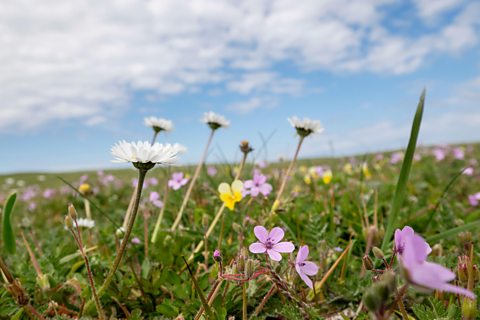
- Machair - Machair is low lying fertile grassy plain. This very rare landscape and can only be found on western coasts of Scotland and Ireland.

History along the north coast of Scotland
Many people think the north coast is a wild place. Although the population today is small and spread out, people have lived here and shaped the landscape for thousands of years.
Key words
Sorry, something went wrongCheck your connection, refresh the page and try again. - Something that only happens at a certain time of year. For example, picking fruit is a seasonal job because it only happens in late summer or autumn.
Sorry, something went wrongCheck your connection, refresh the page and try again. - The release of carbon into the earth’s atmosphere, which contributes to climate change.
Sorry, something went wrongCheck your connection, refresh the page and try again. - Coal, oil and gas are the three fossil fuels – these are our non-renewable energy sources. They are called fossil fuels because they are made from dead animals and plants.
Sorry, something went wrongCheck your connection, refresh the page and try again. - The name given to people who lived in northern Scotland from the time of the Romans to the time of the Vikings, about 300 AD to 900 AD.
Sorry, something went wrongCheck your connection, refresh the page and try again. - An area of land where a crofter lives, grows crops and keeps animals. They do this to provide their own food and to sell some of their produce.
Sorry, something went wrongCheck your connection, refresh the page and try again. - A very wet, marshy area of land where moss and other bog plants decay very slowly forming layers of peat.
Sorry, something went wrongCheck your connection, refresh the page and try again. - A rare type of habitat which is found only in some parts of Ireland and Scotland. Crushed up shells and sand blown onto the land makes it very fertile. This results in wild flowers blooming and covering the land each summer.
Test your knowledge
Quiz
More on Landscapes
Find out more by working through a topic
- count11 of 25
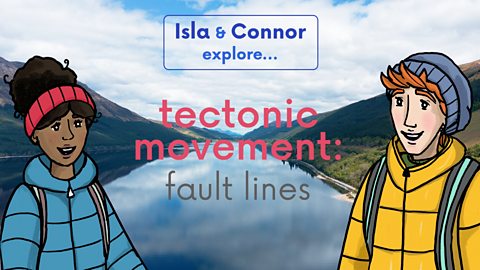
- count12 of 25
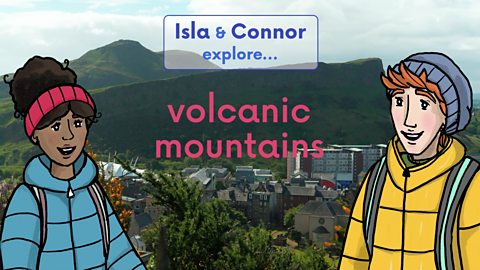
- count13 of 25

- count14 of 25
